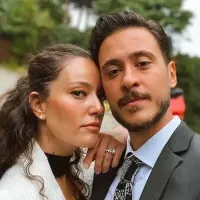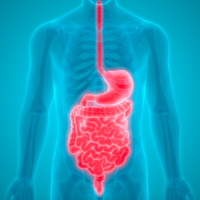The world's best clinics achieve success in Parkinson's treatment by implementing patient-specific, multidisciplinary, and adaptive treatment strategies that extend far beyond standard protocols.
Leading Parkinson’s treatment centers do not rely solely on dopamine replacement therapies or generic rehabilitation programs. Instead, they integrate a wide spectrum of advanced clinical techniques tailored to the neurophysiological profile of each patient. Success in Parkinson's treatment hinges on a clinic’s ability to combine real-time neurological monitoring, continuous outcome-based modifications in therapy, and long-term neuroplasticity support to maximize motor and cognitive function.
These clinics often operate as collaborative hubs where movement disorder specialists, neurosurgeons, physiotherapists, speech therapists, and neuropsychologists meet weekly to reanalyze patient trajectories. What makes these institutions stand out is not just their access to cutting-edge technology but their procedural culture of active treatment adaptation. This means no treatment plan remains static—every therapy is monitored and iterated with a measurable neurofunctional goal in mind.
Moreover, these clinics embed data-driven decision-making into their care protocols. They use long-term outcome datasets to predict medication responsiveness, side effect profiles, and deep brain stimulation (DBS) targeting efficacy. This makes their approach inherently more precise and personalized than most general neurology practices, where symptom masking often takes precedence over neurological progression control.
Optimized Levodopa Strategies Are Not Uniform—They're Micro-Targeted Based on Metabolic Profiling
Clinics that rank among the best parkinson's treatment centers in the world achieve superior results because they do not treat Levodopa as a standard solution; they optimize its dosage and timing based on patient-specific metabolic profiling.
At these elite centers, patients undergo regular pharmacokinetic testing to monitor how their bodies absorb, metabolize, and respond to Levodopa and its adjunct therapies. This process allows clinicians to fine-tune dosages with a precision that prevents motor fluctuations and delays the onset of dyskinesias. Unlike conventional practices that adjust medication based on self-reported symptom diaries, these clinics measure plasma concentration levels to understand real-time pharmacodynamics and how they correlate with symptom modulation.
The best Parkinson's clinics also use continuous dopaminergic stimulation techniques—like intestinal gel infusions (LCIG) or subcutaneous apomorphine pumps—but only after confirming the patient’s suitability through extensive absorption and tolerability tests. These therapies are not introduced casually; they are part of an escalation protocol based on data modeling that predicts long-term benefit versus cognitive or autonomic side effects.
Clinicians in these centers monitor dopamine metabolite markers like homovanillic acid and 3-OMD to assess whether Levodopa is being converted efficiently or whether adjuncts like COMT or MAO-B inhibitors are required to enhance therapeutic effect. They even time the Levodopa dosages around circadian fluctuations in dopamine receptor sensitivity, ensuring that the drug’s effect aligns with the patient’s diurnal symptom patterns.
Deep Brain Stimulation (DBS) Is Customized With Closed-Loop Neuromodulation and Individual Connectome Mapping
The world's best clinics achieve success in Parkinson’s treatment by individualizing deep brain stimulation (DBS) through connectome-based targeting and closed-loop systems that self-adjust based on brain activity patterns.
Unlike standard DBS procedures that apply a one-size-fits-all approach to electrode placement—typically targeting the subthalamic nucleus (STN) or globus pallidus internus (GPi)—top-tier clinics use patient-specific tractography to map motor and cognitive pathways in the brain. This allows surgeons to place electrodes with millimetric precision to stimulate neural circuits responsible for both motor and non-motor symptoms.
These clinics use intraoperative microelectrode recording (MER) alongside resting-state fMRI to identify regions that demonstrate pathological synchrony in the beta frequency range. Once stimulation begins, the parameters are fine-tuned using closed-loop systems that detect neural oscillation patterns in real time and adjust pulse width, amplitude, and frequency dynamically to maintain optimal modulation.
Furthermore, advanced centers are experimenting with adaptive DBS (aDBS), where the stimulator responds to fluctuations in the patient's neural biomarkers, ensuring that the brain only receives stimulation when pathological activity is detected. This not only improves symptom control but also reduces battery use and minimizes side effects like speech issues or mood changes that occur when DBS overstimulates adjacent brain areas.
Such precision-guided and feedback-driven systems are not yet widely available due to their cost and technological demands, but in the world’s most advanced clinics, they represent the gold standard in long-term motor symptom control.
Multidisciplinary Rehabilitation Is Neuroplasticity-Centric, Not Routine
What sets the world's best clinics apart is that their rehabilitation programs are not standardized physical therapy routines but are deeply rooted in principles of task-specific neuroplasticity and sensorimotor retraining.
These programs start with baseline quantitative kinematic analysis, gait lab assessments, and upper limb function mapping using motion capture and electromyography. Physical therapy regimens are designed to target specific deficits in axial versus appendicular rigidity, bradykinesia asymmetry, and balance correction based on postural reflex latency measurements.
Speech and language therapy (SLT) in these centers is customized through acoustic waveform analysis and laryngeal EMG, which helps target vocal fold hypokinesis and improve respiratory-vocal coordination. Therapists adjust vocal intensity drills not just based on patient effort but also on pre-therapy measurements of phonation time, subglottic pressure, and pitch variability.
Occupational therapy focuses on upper limb fine motor control and visual-motor integration. Therapists track changes in cortical activation using EEG feedback to determine which activities produce measurable sensorimotor gains. For example, if a patient demonstrates reduced alpha suppression during hand-writing tasks, therapists introduce neurofeedback-assisted training to strengthen cortical engagement during fine motor tasks.
This entire rehab process is not linear but dynamically adjusted using weekly interdisciplinary reviews of patient progress based on quantitative metrics—not subjective observation. Only a small fraction of clinics globally operate at this level of therapeutic precision.
Cognitive and Non-Motor Symptom Management Is Integrated, Not Fragmented
The world’s most successful Parkinson’s treatment clinics manage non-motor symptoms—such as cognitive decline, mood disorders, autonomic dysfunction, and sleep disturbances—with the same rigor and personalization as motor symptoms.
Cognitive assessments are not limited to MMSE or MoCA tests; instead, clinics use neuropsychological batteries that probe specific executive functions, visuospatial processing, and working memory. These data guide the inclusion of cognitive training modules using computer-based neurofeedback tools that target prefrontal cortex activation.
Autonomic symptoms like orthostatic hypotension or bladder dysfunction are not treated as isolated complaints. These clinics conduct detailed autonomic function tests, including tilt-table testing, heart rate variability analysis, and sweat response mapping, to determine the underlying dysautonomia patterns. Treatments may include individualized fluid and salt protocols, fludrocortisone titration, or even sacral neuromodulation, depending on the dominant dysfunction.
Sleep disorders such as REM sleep behavior disorder (RBD) and sleep fragmentation are treated after polysomnography that evaluates sleep architecture, not just patient-reported quality. Interventions include phase-specific melatonin dosing, light therapy synchronization, and, in cases of sleep apnea, tailored CPAP regimens informed by respiratory effort-related arousals rather than standard apnea-hypopnea indices.
These non-motor interventions are coordinated through a central care team to avoid polypharmacy, ensure synergistic benefit, and reduce adverse interactions, particularly in patients with cognitive vulnerabilities or advanced age.
Ongoing Monitoring and Predictive Analytics Shape Long-Term Outcomes
Top-tier Parkinson’s clinics achieve success because they do not just treat symptoms—they predict and shape the trajectory of the disease using predictive analytics and continuous patient monitoring.
Patients are enrolled in longitudinal monitoring programs where wearable biosensors track tremor amplitude, gait velocity, and postural stability in real-world environments. This data is fed into machine learning algorithms that detect subtle changes in symptom patterns before patients themselves are aware of them, allowing for proactive treatment changes.
Clinics also use imaging biomarkers—such as DAT-SPECT and neuromelanin-sensitive MRI—to measure dopaminergic neuron loss over time. These metrics are cross-referenced with clinical progression scales like MDS-UPDRS to correlate radiological change with functional decline. When discrepancies appear—such as a stable scan with worsening symptoms—clinicians investigate non-dopaminergic factors like cholinergic deficits or co-existing pathologies like PSP or MSA.
This continuous feedback loop allows clinicians to prevent complications such as medication overuse, psychosis, or falls by making small, timely interventions. Moreover, data is anonymized and used in retrospective cohort analyses that help refine predictive models for future patients.
The long-term success of these clinics lies in their ability to manage Parkinson’s not as a fixed degenerative process, but as a dynamic condition that can be modulated through early detection, precise intervention, and adaptive care strategies.






























